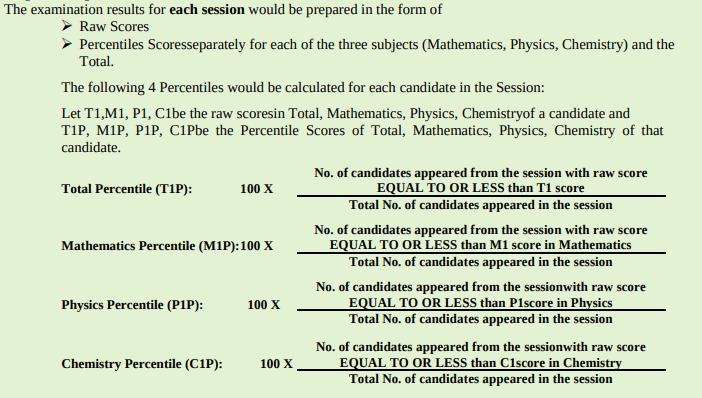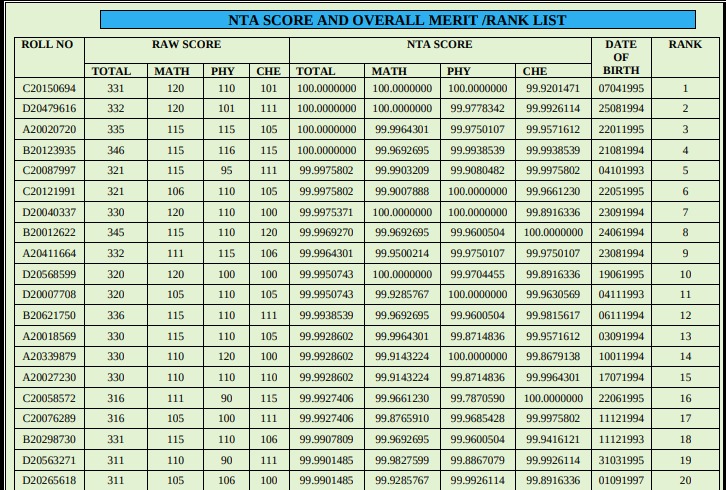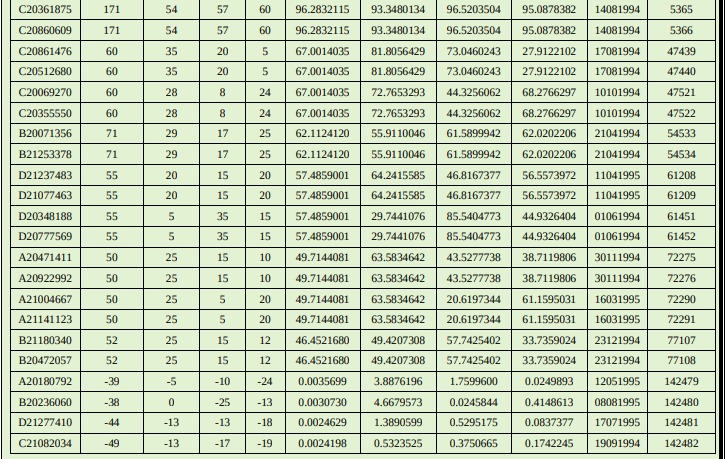Amity University-Noida B.Tech Admissions 2026
Among top 100 Universities Globally in the Times Higher Education (THE) Interdisciplinary Science Rankings 2026
JEE Main 2025 Marks vs Rank - Candidates can check the JEE Main Marks vs Rank data in this article. The JEE Main 2025 marks vs rank indicates the range of marks and their corresponding rank range. Candidates must obtain 270+ marks to secure a high rank in the JEE Main exam. For a 90+ percentile in JEE Main, candidates require 160+ marks. The JEE marks vs rank have been released along with JEE Main scorecards on the official website. The JEE Main 2025 exam for session 2 was held on April 2 to 9, 2025. The National Testing Agency held the JEE Main entrance exam from January 22 to 30, 2025 (session 1). Candidates attempting the JEE Main 2026 exam must be aware of the JEE Main 2025 marks vs rank to be aware of how many marks they should score.
Also Check: JEE Main Percentile Predictor | JEE Main Rank Predictor
JEE Main 2026 will be held in multiple cities across Himachal Pradesh, subject to sufficient candidate numbers. The notified examination centres include Hamirpur (HP03), Shimla (HP06), Mandi (HP08), Una (HP09), Kullu (HP10), Bilaspur (HP01), and Kangra, Palampur (HP04).
This Story also Contains

Applicants must note that JEE Main 2025 marks vs rank are indicative. The marks vs ranks of JEE Main 2025 have been compiled by taking students' data from multiple sources. The JEE Main Marks vs Rank will vary each year based on various factors. Hence, candidates should look at the marks vs rank data given below as an indicator of how their performance translates into ranks.
Candidates can check the JEE Main marks vs rank 2025 to know how many marks to obtain for good rank. Moreover, students can also check the JEE Main marks vs percentile vs rank 2025 to know what percentile they will get based on their score in JEE Main. The data given is indicative.
Score out of 300 | Rank |
|---|---|
286- 292 | 19-12 |
280-284 | 42-23 |
268- 279 | 106-64 |
250- 267 | 524-108 |
231-249 | 1385-546 |
215-230 | 2798-1421 |
200-214 | 4667-2863 |
189-199 | 6664- 4830 |
175-188 | 10746-7152 |
160-174 | 16163-11018 |
149-159 | 21145-16495 |
132-148 | 32826-22238 |
120-131 | 43174-33636 |
110-119 | 54293-44115 |
102-109 | 65758-55269 |
95-101 | 76260-66999 |
89-94 | 87219-78111 |
79-88 | 109329-90144 |
62-87 | 169542-92303 |
41-61 | 326517-173239 |
1-40 | 1025009-334080 |
To calculate your percentile rank among your classmates' test scores, you can use the formula: divide the number of scores below your score by the total number of scores, and then multiply by 100. To illustrate, consider that the candidate scored an 88 on the test, and you want to determine your percentile rank among scores ranging from 67 to 95.
The factors typically considered when determining the relationship between JEE Main marks, rank, and percentile include:
Total number of registered candidates
Number of questions in the paper
Difficulty level of the exam
Candidates' overall performance
Trends in previous years' JEE Main marks versus ranks data



Institutes/Seats | NITS | IIITs | GFTIs |
|---|---|---|---|
Number of Institutes | 31 | 25 | 28 |
Total Seats | 24525 | 9940 | 10228 |
Open + Open-PwD | 9876 | 4143 | 4634 |
OBC-NCL + OBC-NCL-PwD | 6381 | 2637 | 2183 |
SC + SC-PwD | 3628 | 1470 | 1504 |
ST + ST-PwD | 2295 | 737 | 874 |
*Based on JoSAA Seat Matrix
The authority will activate the JEE Main rank card download link on the website, jeemain.nta.nic.in. Candidates can download the JEE Main rank card using the application number and date of birth. The rank card of JEE Main 2025 will comprise the marks and the rank secured in the entrance test. Candidates can check the actual rank obtained in the JEE Main exam. Below are the steps to download the JEE Main rank card.
Recognized as Institute of Eminence by Govt. of India | NAAC ‘A++’ Grade | Upto 75% Scholarships | Application Deadline: 15th Jan
100% Placement Record | Highest CTC 54 LPA | NAAC A++ Accredited | Ranked #62 in India by NIRF Ranking 2025 | JEE & JET Scores Accepted
The authorities released the cutoff for JEE Main 2025 online. JEE Mains cutoff 2025 is the minimum mark required by the candidates to qualify for the exam. The cutoff of JEE Main 2025 will differ for all categories. JEE Main admission cutoff 2025 is the opening and closing ranks within which admission is offered in institutes. The cutoff of IIT JEE Mains for admission is released by JoSAA after each round of counselling.
Candidates can check the opening and closing ranks for admissions into NITs, IIITs, and CFTIs through the JEE Main 2025 Cutoff. Those candidates who manage to secure within the cutoff marks will have a higher chance of admission into the institute. One important thing to note is that the cutoff will differ according to the course and institute selected by the candidates.
Category/Year | General | OBC | SC | ST |
|---|---|---|---|---|
| 2025 | 93.1023262 | 79.4313582 | 61.1526933 | 47.9026465 |
| 2024 | 93.2362181 | 79.6757881 | 60.0923182 | 46.6975840 |
| 2023 | 90.7788642 | 73.6114227 | 51.9776027 | 37.2348772 |
| 2022 | 88.4121383 | 67.0090297 | 43.0820954 | 26.7771328 |
| 2021 | 87.8992241 | 68.0234447 | 46.8825338 | 34.6728999 |
| 2020 | 70.2435518 | 72.8887969 | 50.1760245 | 39.0696101 |
| 2019 | 78.2174869 | 74.3166557 | 54.0128155 | 44.3345172 |
| 2018 | 74 | 45 | 29 | 24 |
| 2017 | 81 | 49 | 32 | 27 |
| 2016 | 100 | 70 | 52 | 48 |
| 2015 | 105 | 70 | 50 | 44 |
| 2014 | 115 | 74 | 53 | 47 |
| 2013 | 113 | 70 | 50 | 45 |
NTA doesn't release any specific JEE Main OBC ranks. The ranks are available as the All India Rank that a candidate achieves after taking the JEE Main exam. Candidates can check the JEE Main AIR ranks to find out which NITs, IIITs, and CFTIs they are eligible for.
Frequently Asked Questions (FAQs)
The formula to calculate JEE Main Rank from Percentile Score is ((100 – P)/100)*N + 1, where p denotes the NTA score, and N denotes the number of students.
JEE Main 2025 percentile of a candidate is prepared by NTA using a formula.
No, AIR and CR are different, AIR is the overall rank obtained by the candidate respective of their category and CR is the rank candidates got in their respective category.
On Question asked by student community
Hello there,
Here is a link for JEE MAINS mock test paper for 2026. Please tap on the link mentioned below to open it:
Thankyou.
Hello,
You can download the JEE MAIN SAMPLE PAPERS from the Careers360 website. Practising these papers will helps you to understand the exam pattern, to identify the important topics, to improve time management, overall it enhances your exam preparation.
LINK: https://engineering.careers360.com/articles/jee-main-sample-papers
I hope it helps!
Hello,
If you are scoring around 120 marks in JEE Main mock tests, it usually falls in the 88–93 percentile range, but this depends heavily on the difficulty level and normalization of the paper.
Many coaching mock tests are deliberately tougher than the actual JEE Main, so scoring lower in
Dear candidate,
1. Difficulty Level
JEE Main / Advanced
Very competitive, national level
Only top ranks get NITs, IIITs, and top private universities
EAMCET (Engineering, Agriculture & Medical Common Entrance Test – AP/TS)
State-level exam
Easier than JEE, syllabus is mostly Class 11 and 12 basics
More weightage for speed
If you prepare for JEE Main , you automatically cover a large portion of the TS EAMCET syllabus , because both are based on Class 11 and 12 PCM. You can attempt JEE Main, TS EAMCET, AP EAMCET, and even private university exams like VITEEE or SRMJEEE. The difference is
Among top 100 Universities Globally in the Times Higher Education (THE) Interdisciplinary Science Rankings 2026
National level exam conducted by VIT University, Vellore | Ranked #16 by NIRF for Engg. | NAAC A++ Accredited
Recognized as Institute of Eminence by Govt. of India | NAAC ‘A++’ Grade | Upto 75% Scholarships | Application Deadline: 15th Jan
World-class and highly qualified engineering faculty. High-quality global education at an affordable cost
Ranked #43 among Engineering colleges in India by NIRF | Highest Package 1.3 CR , 100% Placements
100% Placement Record | Highest CTC 54 LPA | NAAC A++ Accredited | Ranked #62 in India by NIRF Ranking 2025 | JEE & JET Scores Accepted